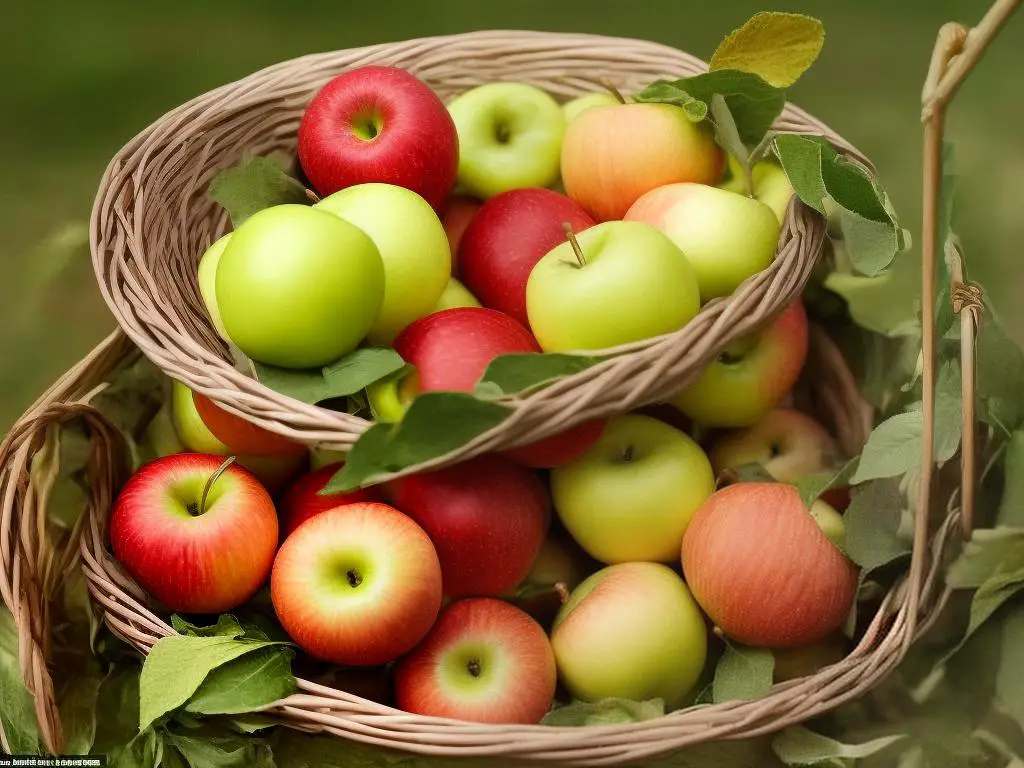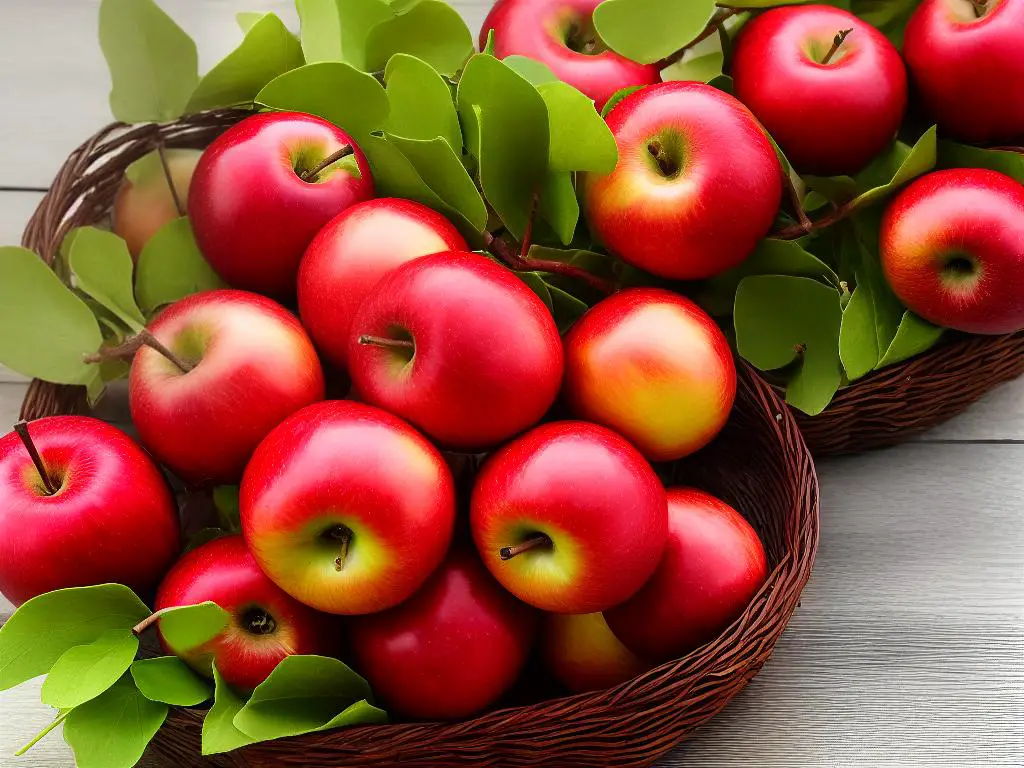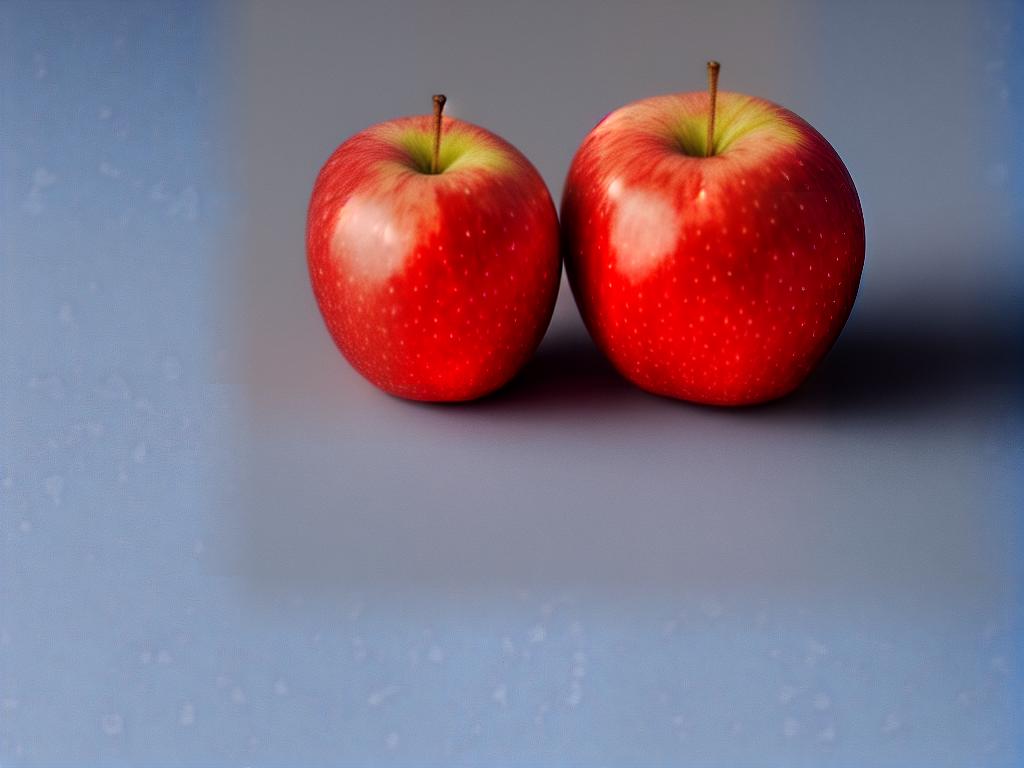Apple, a fruit widely known for its dietary richness and relevance in folklore, is as diverse as the cultures that hold it dear. Even within the scope of red apples, the assortment of varieties offers a remarkable spectrum of flavors, textures, and histories to explore. This discussion covers each variety with an in-depth approach, exploring the widely loved Red Delicious and Gala as well as less celebrated types. We delve into their unique characteristics, from taste to formation. Moreover, going beyond the taste test, we examine the cultivation and harvesting methods that give birth to these beautiful and succulent fruits, providing a holistic view of growth from a tiny seedling to a mature fruit-bearing tree. Amplifying our everyday interaction with these fruits, we explore the myriad of ways they enhance our lives, through nutrition, culinary arts, and even our cultural narratives.
Overview of Red Apple Varieties
Apples Throughout History
Apples have long been an important fruit throughout history, in folklore and in daily diets. There are reportedly over 7,500 varieties of apples to be enjoyed worldwide. This article will delve into the world of red apple varieties, exploring the characteristics, taste and backstory of each.
Red Delicious Apples
Red Delicious apples are easily recognized by their bright red skin and distinct, elongated shape. They are one of the most commercial and popular apple varieties, originating from Iowa in the late 1800s. The flavor is often described as sweet, if not somewhat bland, with a dense and crispy flesh. Red Delicious apples are perfect as a simple snack or for apple decorations but not generally recommended for cooking or baking due to their mild flavor and tendency to lose crispness when heated.
Gala Apples
Gala apples are another notable variety that marks its roots back to New Zealand in the 1930s. They have a reddish-orange skin and are slightly smaller in size. The taste of a Gala apple can be described as sweet with a hint of tartness, and a thinner skin that’s easy to bite into. The texture is juicy and crisp, making it a popular choice for salads, baking, and also juicing. The Gala apples are also favored as they are easy to grow, making them available for a larger part of the year.
Idared Apples
Idared apples are a cross between the Jonathan apple and the Wagener apple, first developed in Idaho Agricultural Experiment Station in 1942. They have a bright, beautiful red skin and an enticing aroma. On the palate, they offer a balanced, tangy taste that’s both invigorating and satisfying. The Idared apple is great for eating raw, but its tart flavor also makes it an excellent candidate for pies and other baked goods.
Empire Apples
Empire apples are a product of a cross between a McIntosh apple and a Red Delicious apple. They were developed at the Cornell University Agricultural Experiment Station in New York in the 1940s. Empire apples are recognized by their glossy red-colored skin with slight streaks of green. They provide a crisp, juicy bite, with a sweet-tart flavor that is more pronounced than Red Delicious. They are versatile and used widely in salads, cider, and pies.
A World of Red Apples
Embarking on the journey of discovering the multitude of apple varieties available today is a remarkable experience. The few mentioned red apple types are merely the tip of the iceberg. Each of these varieties showcase diverse characteristics, delectable flavors, and unique versatility, making them perfect for diverse uses – whether it’s for eating fresh, baking, juicing, or pie-making. Acknowledging the individual attributes of each type allows you to select the perfect apple variety that fits your culinary needs and desires. There are numerous unique red apple types across the globe waiting to be unearthed and appreciated. Learning about them would surely ignite your enthusiasm for apples even further.

Cultivation and Harvesting of Red Apples
Delving Into the Cultivation and Harvesting of Red Apples
Apple trees not only add an aesthetically pleasing touch to any landscape but also yield an abundant harvest, making cultivation a delightful task. These trees are most commonly found in colder climates, especially within USDA (United States Department of Agriculture) zones 2 to 8. Growing Red apple trees involves more than merely planting a seed and watching it sprout; it necessitates a generous amount of care and adherence to specific cultivation techniques. As we continue our journey into the world of red apples, we will cast a spotlight on these rewarding practices.
Essential Cultivation Environment for Red Apple
Cultivating high-yield, premium-quality red apple trees requires fulfilling specific environmental conditions. These include temperate climate, slightly acidic well-drained soil, and ample sunlight exposure. Apple trees flourish in loamy or sandy loamy soil that is deep and rich in humus. Ideal acidic pH ranges from 6 to 7 which helps in the absorption of necessary nutrients. Various types of red apple trees such as ‘Red Delicious’, ‘Royal Gala’, ‘Red Fuji’, and ‘Idared’ prefer these identical conditions for growth. Moreover, apple trees need a minimum of 6 hours of sunlight exposure daily to facilitate healthy growth and ample fruiting.
Cultivation Process of Red Apple
Many hobby orchardists begin with purchasing an apple sapling from a nursery instead of starting from seeds. This is because apple trees are usually horticulturally propagated via a process called grafting, which involves attaching shoot (scion) of the desired apple variety to a rootstock. The grafted trees mature quicker and bear fruits that are truer to the parent apple variety. The apple seedling should be planted in a hole twice its root ball’s size and as deep, making sure that the grafting point is above the soil level. Regular watering and fertilizing (preferably using organic compost or a slow-release granular fertilizer) will aid the tree establishment and subsequent growth.
Pest Management in Red Apple Cultivation
Just like kind of fruit tree, apple trees are susceptible to a plethora of pests such as aphids, codling moths, and mites, along with diseases like scab and mildew. Integrated Pest Management (IPM) tact would be beneficial to control pest infestations. It includes regular monitoring of trees for pest or disease signs, adherence to good sanitation practices, strategic use of pesticides or fungicides, and encouraging beneficial insects that prey on the harmful ones. Another practical tactic is spraying the tree with a dormant oil in early spring before the buds break, which smothers overwintering pests and eggs.
Harvesting Techniques of Red Apple
Harvest time typically falls between late summer and late fall, depending on the apple variant. A mature apple looks full-sized, vividly colored, slightly softened, and comes off easily from the tree upon a gentle upward twist of the fruit. However, not all apples on a tree ripen at the same time; so, multiple pickings might be required. Overripe apples can fall off on their own and should be quickly collected to avoid rot and pest attraction.
Post-Harvest Handling and Storage
Upon collection, the oranges should be sorted out based on their size and quality. Damaged or diseased ones should be discarded. The apples need to be cleaned, dried, and then stored in a cold, humid environment for longevity. While home refrigeration is commonly practiced, some people use other specialized storage method, such as wrapping each apple individually in paper and then storing them in wooden boxes in a cooler cellar.
There is an undeniable allure in cultivating red apples. The chance to witness the metamorphosis of a tiny seed into a mature tree, and later into red, juicy fruit, is a truly enriching experience. It is a pastime that demands not only a clear understanding of suitable environmental surroundings and proficient cultivation techniques, but also an effective pest control strategy. By satisfying these prerequisites, you will be treated to robust apple trees that bear succulent, tantalizing apples annually. The journey to accomplishing this is not a quick one; it is a test of patience, nurturance, vigilance, and love. However, the rewards – the delicious, ruby-red fruits – are a testament to your gardening prowess and an ode to the miracles of nature.

Use and Importance of Red Apples
The Bounty of Health in Red Apples
Red apples are more than just visually appealing; they are a treasure trove of health benefits. Low in calories and chock-full of dietary fiber, Vitamin C, antioxidants, and potassium, these crimson delights are a smart snack choice. The brilliant red hue comes courtesy of anthocyanins – potent antioxidants that serve as a shield against harmful free radicals. Add to this, the soluble fiber, pectin, which supports digestion and satiety, and could even assist in weight management. Not to mention, apples are a rich source of antioxidants like quercetin, catechin, and chlorogenic acid, which have been associated with lower risks of chronic ailments such as diabetes, cancer, and heart disease. Interestingly, eating apples could also support good oral health. As you munch on an apple, your mouth produces saliva that helps reduce tooth decay. It’s easy to see why the adage “An apple a day keeps the doctor away” has stood the test of time.
Culinary Use of Red Apples
The tart and sweet taste of a crunchy red apple enhances the flavor of any dish. They are commonly used in a variety of culinary preparations, which range from baking to cooking. Red apples can be harvested for various purposes – one could make apple butter, sauce, cider, or pies, to name a few. In baking, the red apple’s taste complements pastries, tarts, pies, and cakes to a remarkable degree. Apple pies, in fact, are a staple dessert in American cuisine. It is not uncommon to come across a warm serving of gooey, sweet, and slightly tart apple pie in American households. In cooking, they are often used in salads, coleslaws, stuffing, and as a garnish in savory dishes, contributing a unique texture and flavor.
Red Apple Recipes
Growing culinary creativity and curiosity have brought about an expansion in the use of red apples. Apart from apple pie, the traditional American dessert, other cooking options include braised red apple and red cabbage, a flavorful side dish for roast pork. You can also try a red apple risotto, a delicate and sweet main course. Baked apples stuffed with cinnamon, raisins, and brown sugar make a comforting and equally delightful sweet treat. Another interesting recipe to try out would be spiced apple chutney, which pairs beautifully with cheese and crackers. The culinary uses of red apples aren’t limited to sweet treats. Consider using crisp and slightly tart red apples in savory salads, providing a textural and taste contrast.
Cultural Significance of Red Apples
Red apples have immense cultural significance. They feature prominently in mythology, literature, and folklore. One of the most iconic instances of this is the biblical story of Adam and Eve, where the apple signifies knowledge and the loss of innocence. In Greek mythology, apples are considered sacred and a symbol of love and beauty. They were also a symbol of temptation, as in the story of Paris awarding the golden apple to Aphrodite, thus setting off the chain of events leading to the Trojan War. In American culture, apples stand for health, education, and growth, which is why students traditionally give apple to their teachers. Moreover, apple images and logos are often used for companies to project an image of healthiness and freshness.
The Importance and Versatility of Red Apples
In conclusion, red apples bring a multitude of benefits and uses. Their health benefits, ranging from boosting immunity to fighting chronic diseases, make them a powerhouse of nutrition. The culinary versatility of red apples opens a platform to experiment and enjoy a gamut of dishes, both sweet and savory. Moreover, the cultural significance attached to apples resonates deeply, making them ever-present symbols throughout history and across cultures. Therefore, understanding the value and importance of red apples enables us to utilize them in various aspects of our lives, enriching our health, cuisine, and culture.

The world of red apples is, without doubt, a universe in itself – rich, diverse, and endlessly fascinating. While beloved favorites like the Red Delicious and Gala hold their steadfast popularity, the lesser-known types carry with them a unique charm, enticing the curious food lover to embark on a whole new taste journey. As we trace the life of these apples from cultivation to harvesting, we gain a profound appreciation for the marvel of nature and human nurture that each bite encapsulates. And finally, understanding the culinary, health, and cultural significance of red apples in our day-to-day lives, we discover how they enrich our diets and traditions. Indeed, red apples, in their delightful variety and versatility, continue to offer both a sensory pleasure and a means of connection to our shared human heritage.
